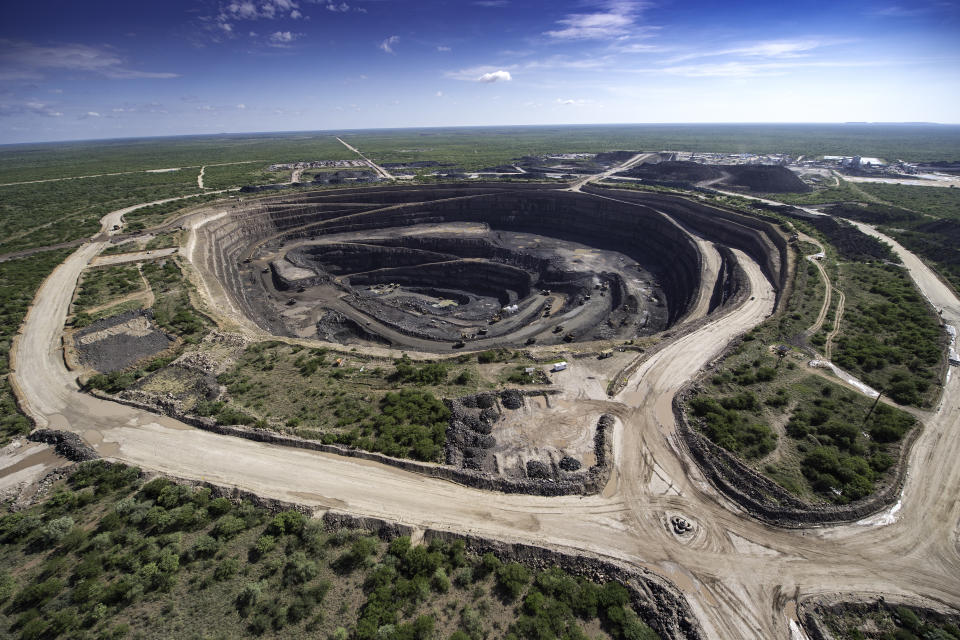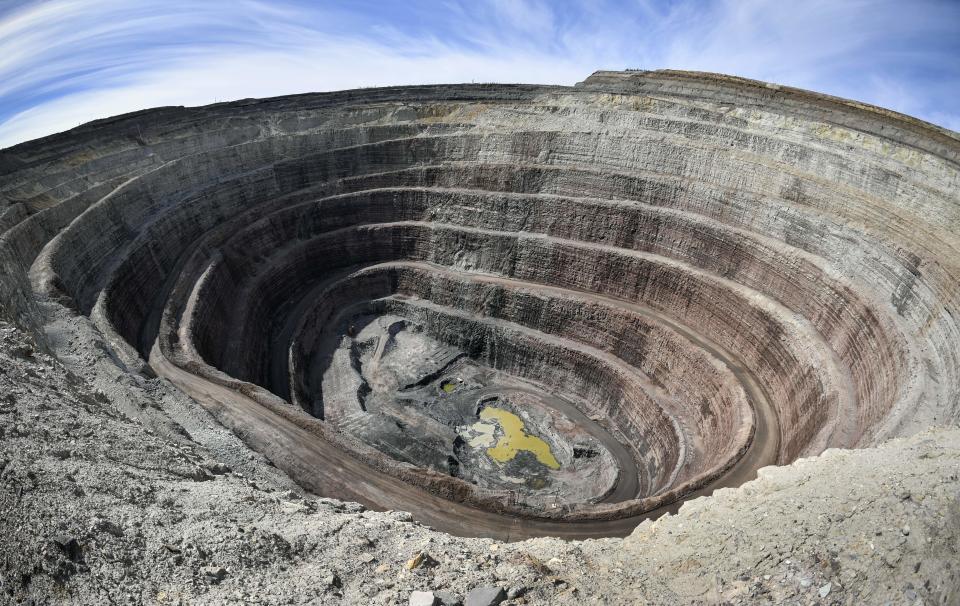Assessing G7 and European Union’s Russian Diamond Ban

Time is up for Russian diamonds on the Western market, as bans on rocks of Russian provenance kick in on Jan. 1.
The European Union Council was the latest to unveil an import ban as part of the EU’s 12th package of sanctions. Similar measures were revealed by the G7 and the U.K. earlier in December.
More from WWD
Under the provision, it will no longer be possible to import nonindustrial diamonds mined, processed or produced in Russia, with a direct ban coming into effect on Jan. 1.
A further ban on Russian diamonds polished in third countries from March 1 closes a loophole that could have seen Russian-mined diamonds circumvent restrictions and still enter the bloc.
A third step due to kick in Sept. 1 will concern lab-grown diamonds, jewelry and watches containing diamonds from Russia.
“These proposed sanctions are part of an internationally coordinated G7 diamond ban, aiming to deprive Russia of this important revenue stream estimated at 4 billion euros per year,” the European body said.
The Sept. 1 deadline also requires the implementation of a “robust traceability-based verification and certification mechanism for rough diamonds within the G7,” according to the statements put out by both groups of countries.
U.K.-based legislation unveiled Dec. 14 bans the import of diamonds from Russia as outlined by a May decision from the G7 and “plans to proceed with a prohibition on ancillary services relating to [Russian] metals” where possible.
These bans do not affect diamonds used for industrial purposes, which can include drilling and machinery manufacturing, transportation infrastructure and vehicles, as well as computer chip production.
The industry has had almost two years to digest [the coming prohibitions]…I don’t think anybody should be caught off guard at this point.”
Paul Zimnisky
These sanctions were a long time coming owing to both the technical complexity of implementing and executing the planned bans. There were also many bureaucratic difficulties “given the number of parties from all over the world that have to come to some sort of unity or conclusion on this,” said New York-based diamond industry analyst Paul Zimnisky.
He added that governing bodies and country groups wanted to “make it clear they are putting something together, they want something that will accomplish the goal [of eliminating a revenue stream for Russia] and be enforceable.”
But concrete details on how the restrictions will be implemented remain thin on the ground.
Edahn Golan, an independent diamond industry analyst, said the G7 announcement is “very vague, and lacks essential details. Nobody will really know where it goes until at least March, and possibly September,” a sentiment shared by the De Beers Group, which stated on Tuesday it would “seek further clarification with the G7 technical committee.”
A major pain point will be where and how the tracking and tracing will be implemented, and whether the diamond-making hub for centuries of Antwerp, Belgium, should become a necessary passage point.
While “encouraged” by the G7’s commitment to engage with stakeholders before the September deadline, De Beers said they were concerned that Belgium would be the “sole point of ingress to the G7 for rough diamonds.”

Golan said the G7 and EU need to consider that “there’s a lot of resentment in African diamond-producing countries” as “compromise will be needed, both for [regulations] to work and to be effective.”
He believes it could be costly and time-consuming if all rough rocks from around the world, ex-Russia — or two-thirds of the world’s supply — need to go to Belgium “to be tracked, marked, identified before being sold to manufacturers.”
And that’s even before adding the 10 percent share of lab-grown diamonds now included through the EU’s sanctions package, he said.
Traceability requirements would create a two-tier system, where “those who can prove the [origins] of their diamonds will be able to be sold everywhere and those who cannot will have access to a very limited market,” Golan said.
Options on the table are either trust-based systems or more stringent technical approaches that may include physical auditing of the goods, according to Zimnisky.
In its statement on Monday, De Beers Group also cautioned against a fully technological route that could be “to the detriment of African producers, artisanal miners and the wider industry,” which might result in supply chain bottle necks and additional costs.
But with upward of three-quarters of the diamond market in the G7 and EU countries, neutral nations such as Africa’s diamond-producing countries and India will have no choice but to “participate and do their part” if they want to continue to cater to that market, according to Zimnisky.
“The major players in the world have been pretty proactive in dealing” with restrictions on Russian diamonds, he said.

According to industry sources, even suppliers who were still dealing with both materials from Russian and non-Russian origin were already compelled to ensure separation, owing to snap inspections from their clients.
Ultimately, adding traceability will “do wonders for the [natural] diamond industry” on the consumer level, estimated Golan. “It ups the game in general, which is fantastic. Bottom line — it’s going to improve consumer confidence.”
This sentiment was echoed by Australia-based mining company Burgundy Diamond Mines Ltd., which operates a mine in the G7’s largest production country: Canada. “Canadian provenance is incredibly important and increasingly valuable — reaffirming the value and benefit of traceability of diamonds,” said Burgundy in a Dec. 15 letter to shareholders.
Pascal Mouawad, chief executive officer at the family-run jeweler Mouawad, which predominantly sources and cuts diamonds in South Africa, also agreed that traceability is here to stay, as it can add a layer of beautiful storytelling to big-ticket items.
“The customers want to know where it’s at. They want to make sure it’s conflict-free. We work with labs to issue origin reports. With all the big diamonds that we mined in the rough, we also create videos for the journey from rough to polished. We are probably one of the first ones that started creating these videos where we see from the rendering to the actual manufacturing to the finished piece,” Mouawad said.
Going forward, Golan expects rough prices to go up, as “there will be a perceived shortage,” and due to implementation costs of new technologies for tracing. But such costs will eventually be passed along, absorbed at the consumer level, and even reduced in the long run as solutions mature.
Having a third of the global diamond supply unavailable will create imbalance, but “once the industry accepts and absorbs this, once protocols are in place, there will be enough non-Russian supply to cater to the Western world,” said Zimnisky, who also pointed out that the Chinese and Middle Eastern consumer markets are large enough to absorb Russia’s supply of gems.
One category to watch is smaller gem-quality stones, which have been outperforming for the past two years, owing to increased demand driven by high jewelry brands and high-end watchmakers. These could be more impacted as “Russia is known for producing a disproportionate amount” of them, pointed out Zimnisky.
While melee diamonds — or stones under 0.2 carats in size — could be an issue, as this category is generally sold by lots and putting individual gems through the process, “the majority of the value is in one-carat [diamonds] and above,” Golan said. Blocking these would be sufficient to significantly hurt Russia on an economic basis in his opinion.
Overall, although Russia accounts for one-third of the global diamond supply and the West remains the largest diamond market in the world, Zimnisky expects “supply disruption probably won’t be as great as you might think.”
Major jewelry houses already self-imposed bans on Russian goods early into the war in Ukraine “because they wanted to be able to say to their clients that they hold the highest standards,” Golan said.
Tiffany & Co. was the first global luxury jeweler to take a stance against Russian-mined diamonds last year. It followed an executive order signed by President Joe Biden that banned, along with other high-end products, the import of Russian-mined diamonds into the U.S.
Luxury conglomerate Compagnie Financière Richemont, French luxury group Kering and Danish jewelry brand Pandora stepped down from the Responsible Jewelry Council in 2022 in protest over its failure to cut ties with Russia, one of the world’s leading producers of diamonds.
“The industry has had almost two years to digest [the coming prohibitions] and to internally prepare something. I don’t think anybody should be caught off guard at this point,” Zimnisky said.
Best of WWD

 Yahoo Sport
Yahoo Sport 





































